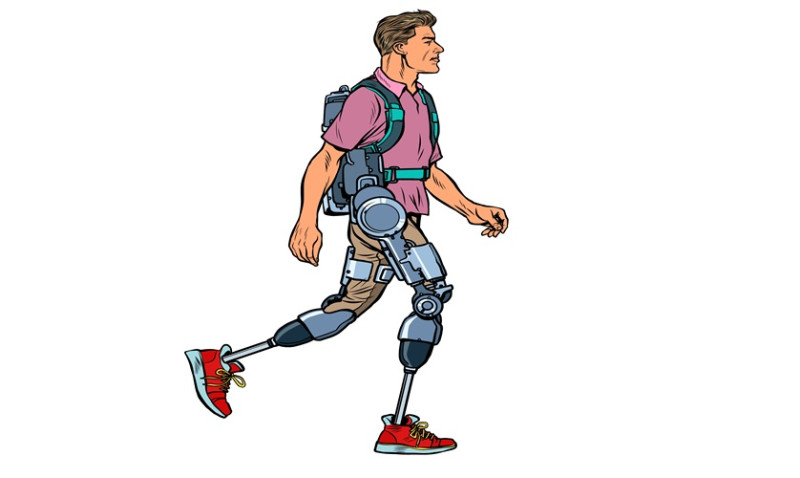
When you’re suffering from muscular aches, joint stiffness, or persistent back pain, it’s crucial to decide on the right professional to help you get back on your feet. Whether your discomfort is a result of long days on the job site, hours hunched at your computer while working from home, or doing DIY renovations over the weekend, seeking help is the smart next step. But who should you turn to — a Physiotherapist, a Chiropractor, or an Osteopath? Understanding the differences between these healthcare professionals can help you make a more informed choice and put you on the path to recovery faster.
Understanding the Differences
Although Physiotherapists, Chiropractors, and Osteopaths all treat musculoskeletal issues, they use different techniques and philosophies to support their patients. Each profession has a unique treatment approach, meaning your decision may depend largely on what type of therapy or result you’re looking for.
Physiotherapists focus on restoring movement and function when someone is affected by injury, illness, or disability. They provide rehabilitation, manual therapy, movement education, and exercises to improve strength and flexibility.
Chiropractors primarily focus on spinal health. Their aim is to reduce pain and restore proper alignment through spinal adjustments and manipulations. Chiropractic care is often associated with back and neck pain, though it can be used for other areas too.
Osteopaths take a holistic approach to the body, believing that the body can heal itself when in proper balance. They work with soft tissues and the musculoskeletal system to address functional issues, often applying gentle pressure, stretching, and massage techniques.
When to Choose a Physiotherapist
Physiotherapy is ideal for anyone recovering from injuries due to sports, repetitive stress, or postural issues. For those who spend long hours on a job site, painters, carpenters, or other tradesmen, physiotherapy can address overuse injuries and muscular imbalances caused by repetitive tasks.
If you’re a young professional spending hours at a desk, you may suffer from shoulder tension or lower back pain — both of which respond well to physiotherapy. Through guided exercises and posture correction, a physio can help you relieve current pain and prevent future discomfort.
Those recovering from surgery, or managing long-term conditions such as arthritis or osteoarthritis, can benefit greatly from a tailored physiotherapy treatment plan. If your pain restricts your movement or strength, a visit to a physio could be exactly what you need.
When to See a Chiropractor
If your pain is sharp, sudden, or seems to stem from misalignments in your back or neck, a Chiropractor might be your first stop. Particularly useful for spinal issues, chiropractors use adjustments to realign the vertebrae and improve nervous system function.
Drivers, desk workers, and tradesmen lifting heavy materials may all be prone to spinal alignment issues. A chiropractor might help relieve pain that hasn’t responded to massage or exercise alone. For example, if bending or turning your neck causes pain or a ‘clicking’ sensation, chiropractic manipulation might bring fast relief.
Some people visit chiropractors regularly as part of a preventive care routine, especially if they’re prone to headaches, migraines, or tension-related issues. If alignment appears to be a primary contributing factor to your discomfort, chiropractic care is worth considering.
When an Osteopath Might Be the Right Fit
Osteopaths are particularly suited to addressing chronic or unexplained pain, especially when it involves not just one area but multiple systems of the body. They focus on the body's structure as a whole, helping different systems work together more effectively.
For those working on construction projects, laying flooring, measuring awkward corners, or lifting awkward materials, you may find osteopathy useful for treating your body as an integrated system. Osteopaths often work gently and holistically, making them a smart choice for those who are seeking a less invasive, whole-body approach.
They pay attention to lifestyle factors such as diet, stress levels, and physical activity to address the root causes of pain, which may be beneficial for professionals with complex, recurring discomfort, or general fatigue and stiffness.
Comparing Services at a Glance
| Specialist | Focus Areas | Common Treatments | Best For |
|---|---|---|---|
| Physiotherapist | Rehabilitation, Movement, Injury Prevention | Exercise therapy, Strengthening, Stretching, Manual therapy | Post-surgery, sports injuries, desk-related posture problems |
| Chiropractor | Spinal Alignment, Nervous System | Spinal adjustments, Manual manipulation | Neck/back pain, headaches, spinal misalignment |
| Osteopath | Holistic Body Balance | Soft tissue massage, Joint mobilisations, Lifestyle recommendations | Chronic pain, general stiffness, full-body wellness |
How to Decide Which One is Right for You
There’s no one-size-fits-all answer when it comes to selecting a practitioner. Many people may even benefit from a combination of therapies, especially if their pain has multiple sources or has been long-standing. Think about your specific symptoms and how they affect your daily life and work.
Are you experiencing localised muscular pain, like in your shoulders or knees? A Physiotherapist can guide you through strengthening and mobility work. Dealing with spinal discomfort while lifting or bending? A Chiropractor with experience in manual adjustments could bring you much-needed relief. Are you feeling general stiffness or fatigue after long periods of physical labour or stress? Then an Osteopath’s gentle holistic approach might be your ideal match.
Also, consider how open you are to each discipline's treatment style. Some people prefer a hands-on, exercise-based recovery, while others want targeted relief through spinal work, or a more nurturing, whole-body approach.
Where to Start Your Journey
If you’re still unsure, you might begin by consulting your GP or a local physiotherapy clinic for an initial assessment. Many clinics now employ multidisciplinary teams or offer referrals between professionals. This can help connect you with the most appropriate specialist based on your symptoms and goals.
DIY enthusiasts recovering from a weekend project gone wrong, designers and planners experiencing screen fatigue, and professionals who put their bodies through daily strain — no matter what your background is, know that help is available. The most important step you can take is the first one toward recovery, and choosing the right practitioner is a key part of that process.
Listen to your body and don’t ignore persistent pain. Addressing the issue early can save time, money, and long-term discomfort — and get you back to doing what you love, pain-free and ready to tackle your next big project.





